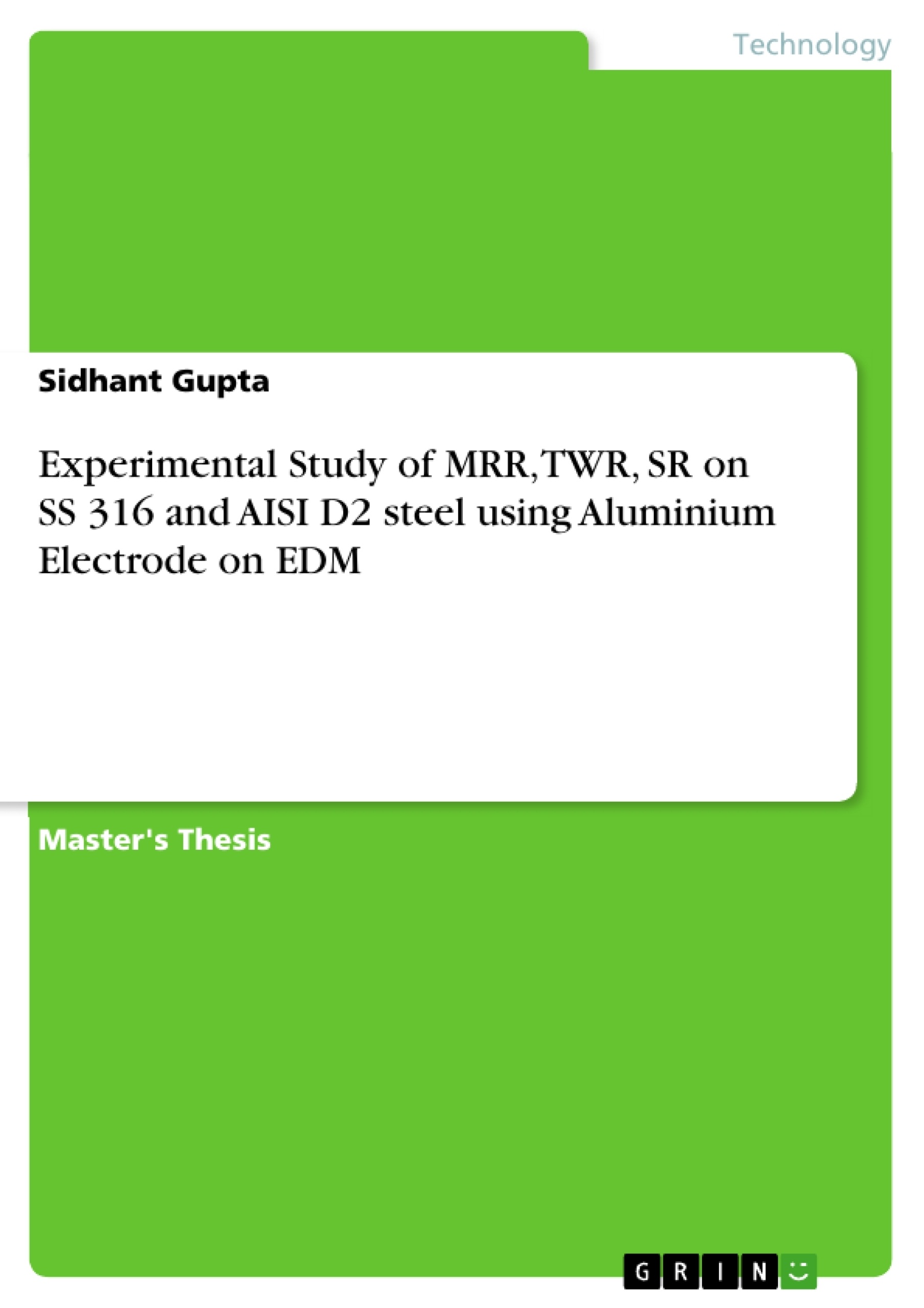In the present study, the effect of aluminium tool electrode has been studied on stainless steel 316 and AISI D2 steel. Dielectric used for the study was EDM oil. Experiments were conducted based on L9 orthogonal array. The experimental study on the effect of input parameters i.e. current, pulse on time and pulse off time on output parameters material removal rate (MRR), tool wear rate (TWR) and surface roughness (SR). The workpiece materials selected were AISI D2 steel and SS 316. The tool electrode used was Aluminium and EDM oil as dielectric fluid. Taguchi design of experiments was used to design experiments, L9 orthogonal array was applied using MINITAB software. Signal to noise ratio and ANOVA were employed for parameter optimization and to achieve max MRR, min TWR and SR. The results indicate that the most influencing factor for MRR is Pulse off time. For TWR, the most influencing factor is current. For SR, the most influencing factor is pulse on time.
Inhaltsverzeichnis (Table of Contents)
- Chapter 1- Introduction
- Introduction and History of EDM
- Working Principle
- EDM Process
- Advantages of EDM
- Disadvantages of EDM
- Dielectric Fluid
- Electrode Material Selection
- Electrical Conductivity
- Melting Point
- Structural Integrity
- Mechanical Properties
- Low Wear Rate
- Metallic Electrodes
- EDM Parameters
- Pulse On Time
- Pulse Off Time
- Peak Current
- Voltage
- Chapter 2- Literature Review
- Introduction
- Literature Survey
- Gap in Literature
- Objective of Present Study
- Chapter 3- Methodology
- Phasing of Work
- Experimental Setup
- Workpiece and Electrode used for experimental work
- Workpiece Material
- Electrode Material
- Machine used for experiments
- Specifications of EDM
- Machine used to measure weight
- Machine used to measure surface roughness
- Taguchi Method
- Input Parameters
- Response Variables
- Evaluation of MRR
- Evaluation of EWR
- Chapter 4 Analysis and Results
- Analysis and results of MRR of AISI D2 steel
- Analysis and results of MRR for machined surface
- Analysis and results of MRR of AISI D2 steel
Zielsetzung und Themenschwerpunkte (Objectives and Key Themes)
This dissertation investigates the impact of an aluminum tool electrode on the performance of Electrical Discharge Machining (EDM) when applied to stainless steel 316 and AISI D2 steel. The study aims to optimize EDM parameters for achieving maximum material removal rate (MRR), minimum tool wear rate (TWR), and optimal surface roughness (SR). The key themes explored in this work include:- Influence of EDM parameters on material removal rate, tool wear rate, and surface roughness.
- Application of Taguchi method for experimental design and parameter optimization.
- Analysis of the impact of different workpiece materials on EDM performance.
- Investigation of the effectiveness of aluminum as a tool electrode in EDM.
- Optimization of EDM parameters for achieving desired surface quality and material removal efficiency.
Zusammenfassung der Kapitel (Chapter Summaries)
- Chapter 1: Introduction: This chapter provides an overview of EDM, including its history, working principle, advantages, and disadvantages. It also discusses the selection of electrode material and the various EDM parameters that affect the process.
- Chapter 2: Literature Review: This chapter presents a comprehensive review of existing research on EDM, focusing on the use of aluminum electrodes and the impact of EDM parameters on workpiece materials. It also identifies gaps in the current literature and outlines the objectives of the present study.
- Chapter 3: Methodology: This chapter details the experimental methodology employed in the study. It describes the experimental setup, workpiece and electrode materials, EDM machine specifications, and the Taguchi method used for designing and analyzing the experiments.
- Chapter 4: Analysis and Results: This chapter presents the results of the experimental study, focusing on the analysis of MRR, TWR, and SR for both AISI D2 steel and stainless steel 316. It analyzes the influence of different EDM parameters on the response variables and identifies the optimal parameter settings for each objective.
Schlüsselwörter (Keywords)
This dissertation focuses on the application of Electrical Discharge Machining (EDM) for machining stainless steel 316 and AISI D2 steel using an aluminum electrode. Key concepts explored include material removal rate, tool wear rate, surface roughness, Taguchi method, parameter optimization, and experimental design. The study investigates the influence of EDM parameters, such as pulse on time, pulse off time, and current, on the performance of the EDM process.- Quote paper
- Sidhant Gupta (Author), 2016, Experimental Study of MRR, TWR, SR on SS 316 and AISI D2 steel using Aluminium Electrode on EDM, Munich, GRIN Verlag, https://www.grin.com/document/342374



